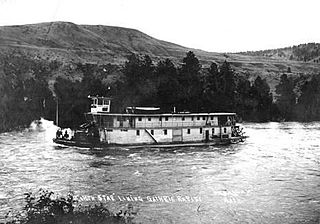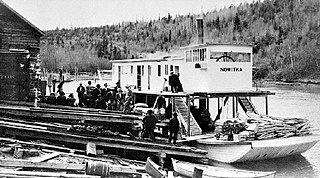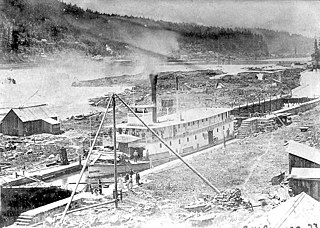
North Star was a sternwheel steamboat that operated in eastern Washington from 1902 to 1904. This vessel should not be confused with the other vessels, some of similar design, also named North Star.

Klahowya was a sternwheel steamer that operated in British Columbia on the Columbia River from 1910 to 1915. The name "Klahowya" is the standard greeting in the Chinook Jargon.

Selkirk was a small sternwheel steamer that operated on the Thompson and Columbia rivers in British Columbia from 1895 to 1917. This vessel should not be confused with the much larger Yukon River sternwheeler Selkirk.

Nowitka was a sternwheel steamboat that operated in British Columbia on the Columbia River from 1911 to May 1920. The name is a Chinook Jargon word usually translated as "Indeed!" or "Verily!".

Isabella McCormack was a sternwheel steamboat that operated in British Columbia on the Columbia River from 1908 to 1910. This vessel should not be confused with others with similar names.

Hyak was a sternwheel steamboat that operated in British Columbia on the Columbia River from 1892 to 1906. Hyak should not be confused with the Puget Sound propeller-driven steamboat also named Hyak. The name means "swift" or "fast" in the Chinook Jargon.

Beaver was a sternwheel steamboat built in 1873 for the Willamette Transportation Company.

Governor Grover was a sternwheel steamboat that ran on the Willamette River during the 1870s. Because of the completion of the Willamette Locks in late 1872, it was possible for vessels such as Governor Grover to be built in Portland, Oregon and then readily navigate the Willamette above Willamette Falls.

Clara Brown was a sternwheel steamboat of the Puget Sound Mosquito Fleet which operated from the late 1880s to the early 1900s, and possibly as late as 1930.

Zephyr was a sternwheel steamboat of the Puget Sound Mosquito Fleet.

State of Washington was a sternwheel steamboat of the Puget Sound Mosquito Fleet, later transferred to the Columbia River.

Tyconda was a sternwheel steamboat of the Puget Sound Mosquito Fleet, later transferred to the Stikine River.

Capital City was a sternwheel steamboat of the Puget Sound Mosquito Fleet. The vessel was originally named Dalton.
Irene was a sternwheel steamboat of the Puget Sound Mosquito Fleet and was active in the early 1900s.

Northern Light was a sternwheel steamboat of the Puget Sound Mosquito Fleet and was active in the early 1900s.

Fairhaven was a sternwheel steamboat of the Puget Sound Mosquito Fleet which operated from 1889 to 1918.
Chehalis was a sternwheel steamboat that ran on the Chehalis River, Puget Sound, and Lake Washington from 1867 to 1882. This vessel should not be confused with other steam vessels named Chehalis.
Daisy was a sternwheel steamboat that ran on Puget Sound and the Skagit River from 1880 to 1897.

Otter was a wooden sternwheel steamboat that was used in Puget Sound and briefly on the Columbia and Stikine rivers from 1874 to 1897.
















